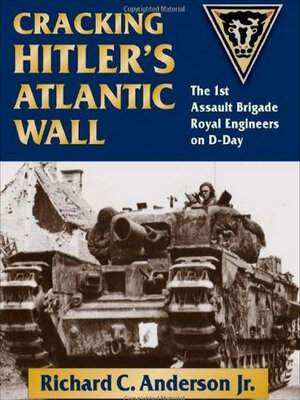Cracking Hitler's Atlantic Wall
ebook ∣ The 1st Assault Brigade Royal Engineers on D-Day
By Richard C Anderson

Sign up to save your library
With an OverDrive account, you can save your favorite libraries for at-a-glance information about availability. Find out more about OverDrive accounts.
Find this title in Libby, the library reading app by OverDrive.



Search for a digital library with this title
Title found at these libraries:
| Library Name | Distance |
|---|---|
| Loading... |
A military historian analyzes the ingenious WWII tanks known as Hobart’s Funnies, detailing their development and their role in the D-Day campaign.
When the British and Canadians landed in Normandy on June 6, 1944, they were accompanied by specialized armored vehicles designed to remove German obstacles and mines. Developed by the Royal Engineers, these tanks known as Hobart's Funnies featured a range of ingenious innovations, from carpet-laying and bridge-laying devices to a giant 290-millimeter mortar.
Examining these vehicles from technical development to combat deployment, military historian Richard C. Anderson Jr. gives a minute-by-minute account of D-Day's early hours on Sword, Juno, and Gold Beaches—the critical moments when success hinged on the assault engineers’ ability to clear a path or breach the seawall.
Anderson also describes the events on Omaha and Utah Beaches, where U.S. troops, despite being offered these vehicles, stormed ashore without them. Through careful comparison of conditions and outcomes, Anderson assesses the vehicles’ performance and impact on D-Day's successes and failures.







